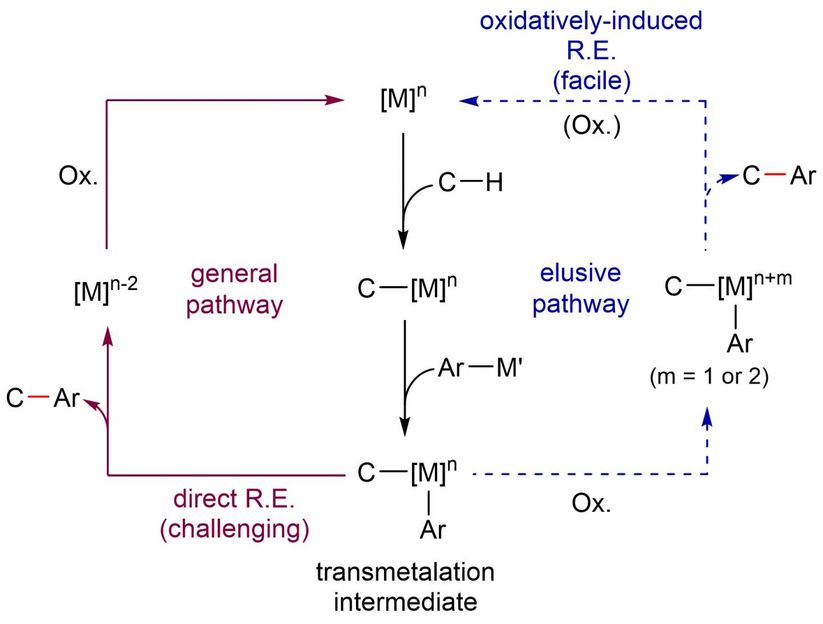From C-H to C-C at room temperature
By oxidizing the iridium center of the reaction intermediate, scientists achieve arylation of C-H bonds at mild conditions
Carbon-carbon (C-C) bonds make up the skeleton of all organic molecules. However, creating such ubiquitous C-C bonds artificially is still a complicated task. In particular, since several molecules used in medicine, pharmacology and material chemistry contain aryl groups, devising a way to efficiently and selectively introduce this chemical group is a major goal for organic chemists. Currently, most Arylation reactions require harsh reaction conditions, including high temperatures and excess additives.

Oxidation of the metal (M, iridium, blue pathway) leads to a 19 kcal/mol decrease in reaction's energy barrier, and allows the arylation to occur at room temperature.
IBS, published in Nature Chemistry
Scientists at the Center for Catalytic Hydrocarbon Functionalization, within the Institute for Basic Science (IBS, South Korea), devised a method to selectively introduce aryl groups into C-H bonds at room temperature. Published in Nature Chemistry, the study also clarifies the details of this reaction, which turned out to be different from the conventional idea.
In simple terms, the procedure consists of three main steps. Firstly, the iridium catalyst activates the C-H containing substrate. Secondly, the arylsilane attacks the metal, creating an intermediate molecule. The team crystallized such intermediate and demonstrated that oxidizing the iridium center of the intermediate (third step) is beneficial to achieve a low energy arylation reaction.
The proposed reaction mechanism was verified with electroparamagnetic resonance, cyclic voltametry and computer simulations. "Developing more efficient and environmetally benign oxidation system is our next goal," concludes Kwangmin Shin, first author of the study.
Original publication
Other news from the department science

Get the chemical industry in your inbox
By submitting this form you agree that LUMITOS AG will send you the newsletter(s) selected above by email. Your data will not be passed on to third parties. Your data will be stored and processed in accordance with our data protection regulations. LUMITOS may contact you by email for the purpose of advertising or market and opinion surveys. You can revoke your consent at any time without giving reasons to LUMITOS AG, Ernst-Augustin-Str. 2, 12489 Berlin, Germany or by e-mail at revoke@lumitos.com with effect for the future. In addition, each email contains a link to unsubscribe from the corresponding newsletter.



















































